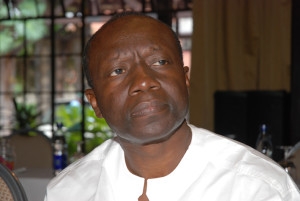
Uncertainty grips 10-year energy bond
Investor appetite for the 10-year energy bond is low as prospective participants in the bond have raised uncertainties about the liquidity of the energy sector levy to retire the liability when it falls due.
Advertisement
The government opened bids for it’s first-ever energy bond on october 24, 2017 targeting GH¢ 6 billion to retire debts owed banks and other financial institutions by utility and energy companies.
Instead of following the norm of backing the bonds with a sovereign guarantee, the government rather issued the long dated instrument with the backing of inflows from the energy sector Levy Act, 2015.
However, investors doubt that the esLA inflows will be enough to repay the interests on the 10-year bond, after the seven-year one has been repaid.
Considering that the bond was not backed by a sovereign guarantee from the government, the investors were concerned about the ability of the ESLA inflows to repay the interests on the 10-year bond after the sevenyear one has been repaid.
An economic analyst with Databank Financial Services Limited, Mr Courage Kwesi Boti, told the GRAPHIC BUSINESS that the 10- year energy bond suffered due to concerns from investors over the liquidity of the ESLA levy over the life span of the bond.
He said the government was notable to meet its target for the bond because the investors were considering if there would still be liquidity after the seven year bond is repaid.
Speaking in an interview with the GRAPHIC BUSINESS, he said that was not a typical government bond so if the investors did not find the cash flow vehicle too convincing and appealing, they would distance themselves from it.
It couldn’t be that there was no interest for the bond because if that was so, we wouldn’t have people buying the seven-year; the issue has to do with concerns over liquidity of ESLA after the seven year bond has been repaid,” he pointed out.
“Investors are looking at the bond maturity of 10 years and looking at the ESLA cash flow projections, there is no doubt that the inflows can take care of the seven-year bond.
But the question is after they meet the first obligation,will there still be enough in the ESLA account to repay the 10-year bond,” he explained.
Background
Depressed investor appetite greeted the energy bond which was meant to raise GH¢6 billion in two branches to pay off the debilitating energy sector debts.
However, the two-tranche offer could only raise GH¢3.32 billion,which is 43 per cent short of the target.
As of the close of the initial auction date of October 27, the seven-year bond yielded GH¢2.5 billion against a target of GH¢ 2.4 billion, with the 10-year bond yielding GH¢920 million against a target of GH¢ 3.6 billion.
The government therefore extended the sale of the 10-year bond to November 3, 2017.
More education needed
Mr Boti urged book runners of the transaction to offer more education to investors on the nature and structure of the bond.
“I think what is needed now is communication and market understanding because the 19.5 percent that the government is offering on this bond is a very good offer, considering the credit enhancement that the bond has,” he noted.
“For all the concessions that there has been a great hue and cry over the half-hearted approach successive governments have adopted towards the development of the agricultural sector.
Mr Boti was optimistic that the government would be able to raise the needed money from the bond when it closes the auction on Friday, November 3, 2017.
“I think they are extending the auction period based on request from investors who are looking at better clarity on the whole thing.
There were some people that got interested quite late and they are now seeking approval from their credit committees and make concrete decisions so I think this is what may have influenced the decision of the government to extend it,” he said.
Absence of sovereign guarantee
The Head of Research at FirstBanc Financial Services, Mr Benjamin Amoah-Adjei, in an interview with the GRAPHIC BUSINESS also cited the absence of the sovereign guarantee as the main reason for the low showing.
Even though, the government has indicated that it will be in the position to take over payments in case the ESLA is not sufficient to pay off the interests on the bond, he said the fact that it was not sovereign-guaranteed was a major worry to investors.
“The surprising thing is the seven-year was subscribed and I will like to see the investor participation because the truth is domestic investors do not really care about whether there is asovereign guarantee or not.
It is the foreign investors who have an issue so it might be that the domestic investors participated more in the seven-year bond,” he indicated.
Structure of bond
The structure of the bond is semi unsecure, as it is backed by the Energy Sector Levy Act (ESLA) flows enacted by Parliament in December 2015.
Initially, the government had planned to raise GH¢10 billion from the bond but the levies that have been collected so far and the projections of the levies that will come in
allowed for the issuance of GH¢6 billion.
The bond is expected to bring, stability to the energy and the banking sectors, while making the GSE more active.
It is also expected to help improve liquidity on the market, while non-performing loans (NPLs) would also reduce drastically.




